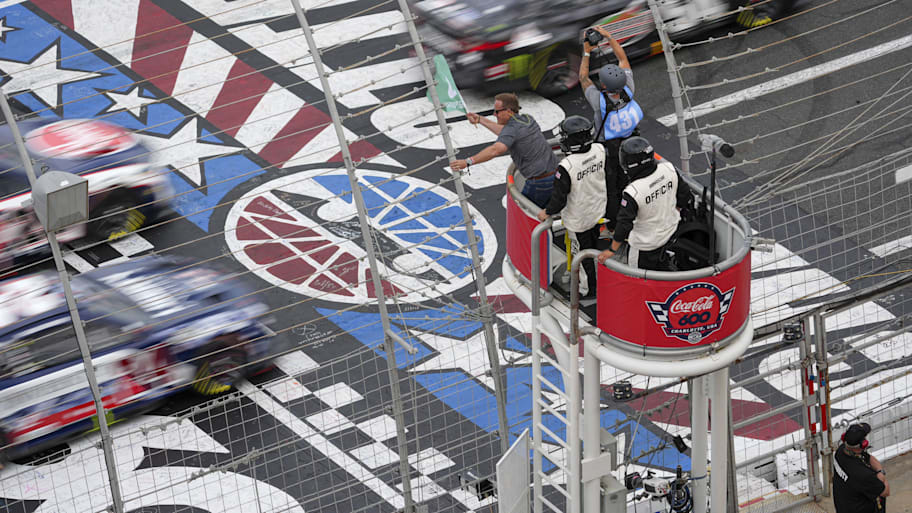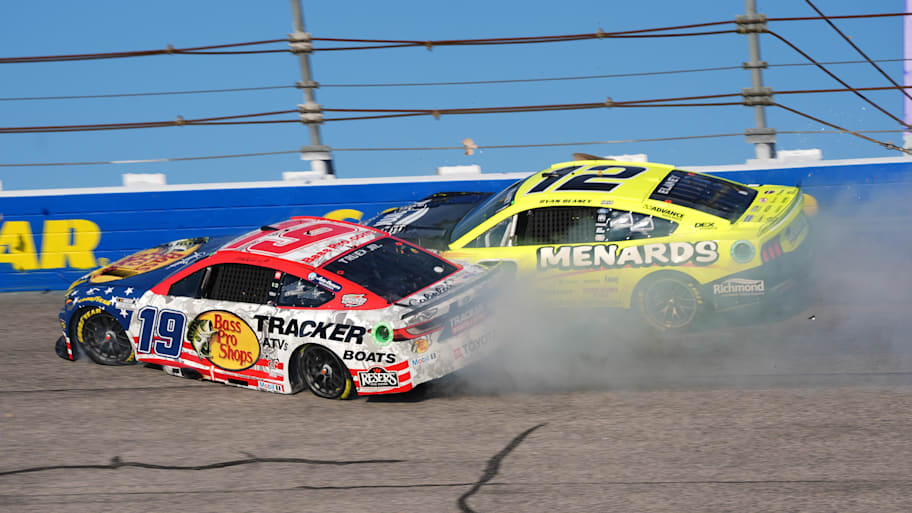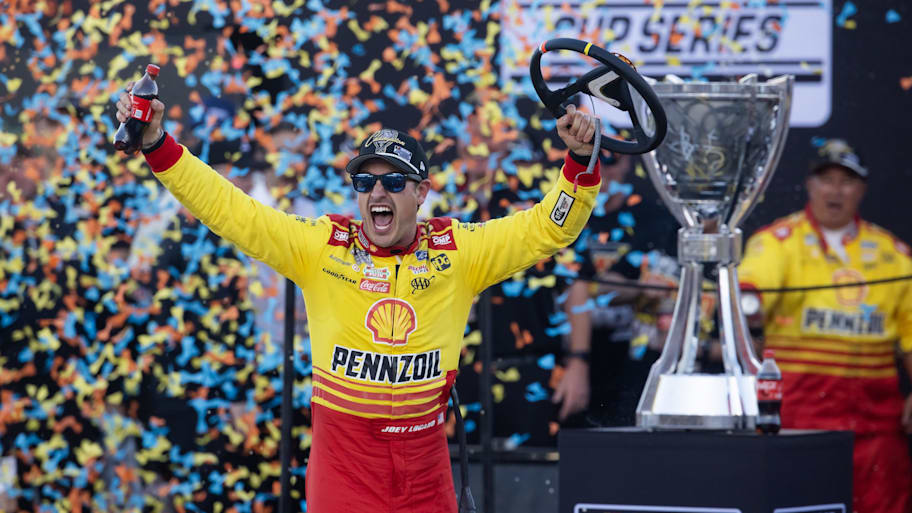
If you’re new to watching NASCAR, you might be surprised to learn there’s a little more to a race than simply “cars driving in circles” as the joke often goes. You’ll quickly hear about things like stage points, tire changes, and more.
Here is a brief explanation of what a NASCAR race looks like, so you can get up to speed while watching along for the first time.
How Long Is a NASCAR Race?

The answer varies from race to race, but typically NASCAR Cup Series races are between 300 and 500 miles long. There are some exceptions - short tracks and road courses typically run shorter distances due to their slower speeds, and the longest race of the season is the Coca-Cola 600 (600 miles) held each Memorial Day Weekend at Charlotte Motor Speedway.
Typically, a NASCAR Cup Series race takes between three and four hours to complete.
Stages in NASCAR Races

Regardless of the distance, each race other than the Coca-Cola 600 has three stages. The Coca-Cola 600, with its extra distance, is divided into four stages.
The stages are similar to the breaks between quarters or periods in other sports. At the end of each stage, a green-and-checkered flag waves, and the top 10 drivers in the race at that time are awarded bonus points in the season championship. Those bonus points incentivize drivers to compete at the front of the field over the entire race.
Stage Point Distribution: The top 10 drivers in a Stage are awarded points in a 10-to-1 format with the winner of a Stage receiving 10 Stage Points, second place receiving 9 Stage Points and so on.
At that point, the field is slowed for a caution period. Teams will often build their strategy for the day around these stage breaks as opportunities to change tires, add fuel and make adjustments to their race cars if they are not handling well.
The Flags of NASCAR

Since we’ve already mentioned the green-and-checkered flag for ending a stage, here is an explanation for all of the different flags you will see while watching a race.
GREEN - The green flag waves at the start of every race. It is also displayed to restart a race following a caution period. Simply put, green means go.
YELLOW - The yellow flag comes out to slow the field due to an unsafe condition on the racetrack. Most frequently, this is either an accident involving one or more cars in the race or debris on the racing surface. When the yellow flag is displayed, the pace car joins the track and the field lines up at a reduced speed behind the pace car.
Once the track is safe to return to full-speed conditions, the green flag comes back out and the race resumes.
RED - When the red flag is out, the race comes to a halt. The field is directed to stop, usually behind the pace car on the race track or on pit road. This is usually a result of either a large accident or extensive amount of clean-up that will necessitate a longer stoppage in the race. The red flag could also be a result of inclement weather that makes it unsafe for the race to continue, such as rain.
BLACK - The black flag is shown to a driver who is being penalized by NASCAR for some manner of rules infraction and must report to pit road to serve a penalty. Alternatively, the black flag may be shown to a car that fails to meet minimum speed.
BLUE FLAG/YELLOW DIAGONAL STRIPE - This flag is displayed to competitors to inform them faster, lead lap cars are approaching them.
WHITE - There is one lap to go in the race.
CHECKERED (BLACK/WHITE) - The race is over!
CHECKERED (GREEN/WHITE) - This flag marks the end of a stage.
What Happens Under Caution?

While yellow flags are often the result of a driver’s misfortune, they also serve as timeouts for the rest of the cars on track. With the field bunched up behind the pace car, a yellow flag erases any advantage built up by the leader and gives teams a chance to come to pit road without a significant loss of time on track.
After the field is lined up behind the pace car, pit road will open. Any cars who wish to pit under that caution do so at that time, with hopes of winning the race off pit road after having their service completed. This is when NASCAR pit crews shine, as the athletes who work on these cars change four tires and add fuel to the cars in a matter of mere seconds.
During the caution, you might also hear about a driver getting the “free pass.” The highest-running driver among those no longer on the lead lap (i.e.: Drivers who have been passed by the leader and are now a full lap behind that competitor) is given a lap back and restarts the race at the tail of the field.
Before the race restarts, you’ll also see the field choose whether they will line up on the inside line or the outside line when the green flag waves. The “choose rule” gives the leader first choice of lane, with each following driver then moving to the left or right of the choose area when requested to do so.
Pit Stops, Explained

During a pit stop, five pit crew members can service the car. During a standard four-tire pit stop, this will be two tire changers, a tire carrier, a jackman and a fueler.
In a blur of time that often takes little more than 10 seconds, the crew races around the car, changing four tires and refueling the car. Occasionally, crew members may also be tasked with other duties, such as making an adjustment on the car or repairing damage.
With the pressure to complete this service as quickly as possible and get cars on track ahead of the competition, pit crew members have evolved dramatically over the years. In today's NASCAR, pit crew members are top-notch athletes, often former Division I athletes who have transitioned to a career going over the wall with the sport's top race teams.
The Long Haul - Battling for a Championship

Each NASCAR event is part of a season-long battle for the Cup Series Championship. While the format has changed over the years, the goal remains the same - win the title at year's end.
After each race, drivers are awarded points based on both their race finish and stage finishes. Those points accumulate over the first 26 races of the 36-race season.
After 26 races, the driver with the most points is crowned the regular season champion. Furthermore, the 16-driver playoff grid is formed, consisting of all race winners from the regular season and the top points earners without a win.
Over the final 10 races, that field of 16 is whittled down through the NASCAR Cup Series Playoffs to 12, then eight, then a final four. Those final four drivers compete against each other in the season finale for the NASCAR Cup Series Championship.
More must-reads:
- NASCAR power rankings: Wild Talladega race leads to changes at the top
- Chase Briscoe clinches Championship 4 berth with wild Talladega win
- The 'Most two passing touchdown NFL games' quiz
Breaking News
Trending News
Customize Your Newsletter
 +
+
Get the latest news and rumors, customized to your favorite sports and teams. Emailed daily. Always free!








